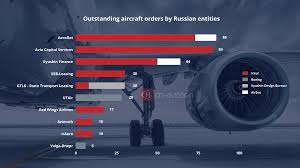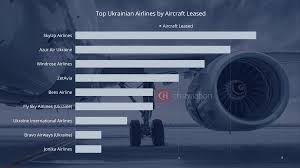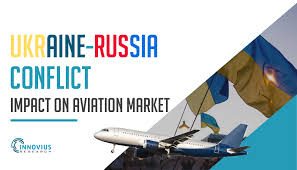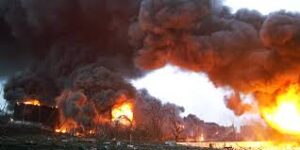The Impact of War on the Aviation Industry 
War has long had a profound impact on the aviation industry, affecting everything from technological advancements and operational practices to the economic viability and safety of airlines. While aviation as we know it today emerged in the wake of military conflicts—particularly during and after World War I and World War II—its relationship with warfare is more complex than simply being a beneficiary of technological innovations. Armed conflicts introduce disruptions that can significantly alter the course of the aviation industry, and these effects can be felt for decades.
In this article, we will explore how war has historically shaped the aviation industry, examine the long-term effects of military conflicts on civil aviation, and analyze how the aviation sector adapts to and recovers from the impact of war. Additionally, we will consider the role of aviation in modern warfare and how the industry evolves in response to military needs.
- Technological Advancements Driven by War
World War I: The Dawn of Military Aviation
The relationship between aviation and war dates back to the early 20th century, when aircraft were first used in combat during World War I (1914-1918). Although aircraft were initially used for reconnaissance, by the end of the war, airplanes had evolved into more sophisticated machines, used for combat, bombing, and even strategic missions. These early experiences paved the way for rapid advancements in aviation technology.
- Innovations in Aircraft Design: The first true fighter planes, like the Sopwith Camel and Fokker Dr.I, were developed during WWI. The need for faster, more maneuverable planes to engage enemy aircraft led to improvements in aerodynamics, engine performance, and armament integration.
- Development of Bombers: Strategic bombing became a key tactic during the war, which led to the development of larger, more powerful aircraft designed to carry bombs. The Handley Page V/1500 was one of the first heavy bombers used in combat.
- Commercial Aviation’s Early Roots: The end of WWI saw the demobilization of military aircraft, many of which were adapted for civilian use. The growth of air mail services and the establishment of early commercial airlines such as Pan American Airways and Deutsche Luft Hansa were in part a result of wartime technological innovations.
World War II: The Golden Age of Military Aviation
The effects of World War II (1939-1945) on the aviation industry were far-reaching. The war accelerated technological developments at an unprecedented rate, fundamentally transforming the aviation landscape. Key technological advancements during WWII had both immediate and long-lasting effects on military and civil aviation.
- Jet Propulsion: The introduction of jet engines, exemplified by the Messerschmitt Me 262 (Germany’s first operational jet fighter), revolutionized both military and commercial aviation. The experience of WWII demonstrated the viability of jet propulsion for high-speed, long-range aircraft. The end of the war saw the emergence of the first commercial jet airliners, such as the De Havilland Comet and Boeing 707, which laid the foundation for the jet age of civil aviation.
- Radar and Navigation Systems: WWII saw the development of advanced radar technology, which not only played a critical role in military defense but also had significant applications in civilian air traffic control systems and navigation. The use of radar for tracking aircraft and managing air traffic was integrated into post-war commercial aviation.
- Aircraft Materials and Manufacturing: The demand for faster, stronger, and more efficient aircraft during the war led to innovations in aircraft materials, such as the use of lightweight alloys and strengthened structures, which were later adopted in civilian aircraft design. Mass production techniques honed during the war allowed manufacturers like Boeing and Lockheed to scale up civilian aircraft production after the war.
- Civilian Airlines and Aircraft Conversions: Many military transport aircraft, such as the Douglas DC-3, which was originally developed as a military cargo plane, were adapted for civilian use. After the war, thousands of surplus military aircraft were converted into commercial airliners. The DC-3, for instance, became one of the most successful commercial aircraft of the 1940s and 1950s, and its widespread use helped democratize air travel.
- Economic Impact of War on Aviation
Disruptions to Civil Aviation During Wartime
While wartime innovations in aviation technology led to significant advances, the immediate economic consequences of war on the civil aviation sector are generally negative. During periods of conflict, aviation can face a host of challenges:
- Increased Operational Costs: War often leads to higher fuel prices, increased insurance costs, and disruptions to airline networks. During wartime, airlines may be forced to increase their operational expenses to maintain routes in volatile regions, especially when airspace is restricted or airports are damaged.

- Flight Cancellations and Route Closures: Civilian flights are often diverted or canceled due to safety concerns during armed conflict. Wars typically lead to restricted airspaces, which can force airlines to alter their flight paths or stop flying in certain regions altogether.
- Decreased Demand for Air Travel: Civilian air travel often drops during wartime. The uncertainty surrounding the safety of air travel, combined with economic downturns, means that airlines typically see significant reductions in demand. For example, following the September 11 attacks in 2001, global air travel plummeted, and airlines faced massive losses.
- Airline Bankruptcies: In some cases, prolonged wars or prolonged periods of instability can lead to financial ruin for airlines. The Vietnam War (1955-1975), for example, heavily impacted commercial airlines operating in Southeast Asia. Airlines serving regions affected by conflict often find themselves at risk of bankruptcy or forced mergers due to financial strain.
Post-War Economic Recovery and Growth
Despite the setbacks caused by wartime conditions, the post-war periods, particularly following WWII, have often seen rapid growth in the aviation sector. This growth is typically driven by advances in technology, expanded consumer demand, and favorable economic conditions in the wake of peace.
- The Post-WWII Boom: After WWII, the global aviation industry experienced significant growth, partly due to surplus military aircraft being repurposed for civilian use. Increased disposable income, the rise of commercial jet travel, and the formation of national airlines in former colonial regions created new opportunities. The introduction of large commercial aircraft, such as the Boeing 707 and Douglas DC-8, helped make air travel more affordable and accessible to the general public.
- Expansion of International Air Travel: The establishment of International Civil Aviation Organization (ICAO) in 1947 helped set standardized regulations for international air travel, making it easier for airlines to expand their routes globally. The growing global demand for air transport, particularly after the post-war economic recovery in Europe and the U.S., led to the expansion of major international airlines and the opening of new international airports.
- Modern Warfare and the Aviation Industry
In the modern era, the impact of war on aviation remains significant, though the nature of conflict and the role of aviation in warfare have changed. The development of unmanned aerial vehicles (UAVs), advanced drone technology, and the increasing use of commercial airliners in military operations are just a few examples of how modern warfare is intertwined with the aviation sector.
Military Aviation and Technological Integration
- Surveillance and Reconnaissance: The role of surveillance and reconnaissance in modern warfare has drastically evolved, with aviation playing a central role. UAVs, or drones, have become a critical component of modern military strategy. Drones are used for intelligence gathering, surveillance, reconnaissance, and even targeted strikes. This shift has led to the development of new aircraft and airspace management systems.
- Commercial Airliners in Military Service: In times of war, military forces often adapt commercial aircraft for military purposes. For example, the Boeing 747 and Airbus A310 have been converted into military cargo planes and air tankers for refueling aircraft in mid-flight. Civilian aviation infrastructure, such as airports and air traffic control systems, may also be repurposed or adapted to support military operations.
Civil Aviation During Conflict
While the immediate impact of war on the aviation industry can be devastating, it is also true that aviation is sometimes used as a tool for peacekeeping and conflict resolution. International airlines have historically been used to evacuate civilians from war zones, facilitate humanitarian missions, and provide essential supplies during conflict.
- Evacuation and Humanitarian Flights: During wartime, airlines and governments often work together to conduct evacuation flights, moving civilians out of conflict zones. This is particularly important in situations of civil war, such as during the Rwandan Genocide (1994) or in the aftermath of natural disasters in war-torn countries.
- Rebuilding After Conflict: After major conflicts, the aviation industry often plays a critical role in the economic recovery of affected regions. The rebuilding of infrastructure, including airports and airlines, is a key step in stabilizing economies and reestablishing international trade routes.
- Recent Conflicts and the Aviation Industry
The Gulf Wars and Middle East Conflicts
The Gulf Wars (1990-1991 and 2003) and subsequent conflicts in the Middle East have had profound effects on regional and global aviation. The conflict in Iraq and Syria, coupled with the involvement of major powers like the U.S., Russia, and NATO, has created instability in the region. Civil aviation has been disrupted, and airlines have been forced to adjust their routes, security protocols, and operational practices.
- Flight Path Changes: Airlines operating in the Middle East have faced significant challenges in terms of flight path changes due to the instability of the region. Restricted airspace, missile threats, and the occasional closure of air routes have forced airlines to rethink their operations in the area.
- Security Costs: The September 11, 2001 terrorist attacks had an immediate and long-lasting impact on the aviation industry. Beyond the human toll, the aviation industry had to cope with increased security regulations and surveillance, both of which added significant costs to airlines and led to delays and inefficiencies. The creation of the Transportation Security Administration (TSA) in the U.S. was one result of these increased security measures.
- Conclusion

The aviation industry is inextricably linked to the impacts of war. While military conflicts have driven technological advancements in aviation, they have also introduced significant operational, economic, and safety challenges. From the introduction of jet engines and radar during WWII to the role of drones in modern military operations, the aviation industry has been shaped by wartime needs, even as it faces disruption from conflict.
In the modern era, the aviation industry’s resilience continues to be tested by ongoing geopolitical tensions, terrorism, and military engagements. The challenges posed by war require flexibility, adaptability, and innovation within the aviation sector to maintain safety, profitability, and the ability to serve both civilian and military needs. As the world faces new and evolving threats, the aviation industry must continue to navigate the complex interplay between war, technology, and global connectivity.
